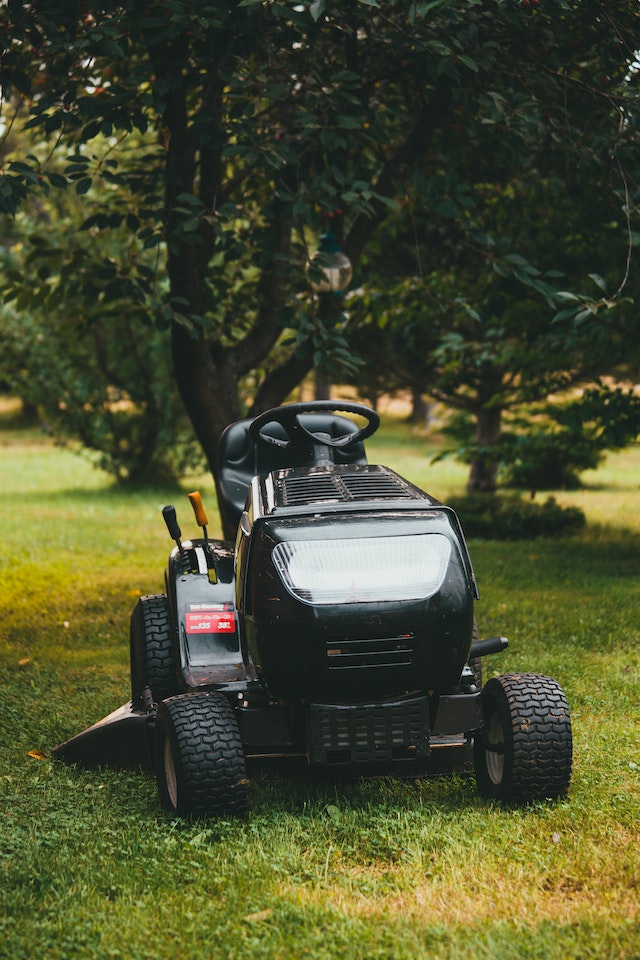Are you dreaming of having a lush, beautiful green lawn that will be the envy of your neighborhood? Look no further! In this article, we will share ten expert tips to help you achieve the lawn of your dreams. Whether you are a seasoned gardener or a beginner, these tips will guide you in creating and maintaining a green, healthy lawn.
We understand that achieving and maintaining a green lawn can be daunting. But fear not because our expert tips will equip you with the knowledge and tools you need to succeed. From proper watering techniques to mowing and fertilizing tips, we will cover all aspects of lawn care.
The Importance of Having a Green Lawn
Having a green lawn goes beyond aesthetics. It adds value to your property and creates a welcoming atmosphere for outdoor activities. A well-maintained lawn can be a source of pride and a space for relaxation and enjoyment. It also contributes to a healthier environment by reducing soil erosion, absorbing carbon dioxide, and releasing oxygen.
A green lawn can act as a natural air conditioner, cooling the surrounding area and reducing the need for artificial cooling systems. It can also filter pollutants, improving the air quality in your neighborhood. So, whether you want to enhance the beauty of your home or contribute to a healthier planet, achieving a green lawn is worthwhile.
Understanding the Basics of Lawn Care
Before diving into the specifics of achieving a green lawn, it’s important to understand the basics of lawn care. The success of your lawn depends on factors such as the type of soil, climate, and the amount of sunlight it receives. Considering these factors will help you make informed decisions throughout the lawn care process.
One of the first steps in lawn care is soil preparation and testing. This involves assessing the condition of your soil and making any necessary amendments to ensure optimal growth. Testing your soil will determine its pH level, nutrient content, and texture, which are crucial for selecting grass seeds or sod.
Soil Preparation and Testing

To prepare your soil for a green lawn, start by removing any existing vegetation, rocks, or debris. This can be done by hand or with the help of a rake or shovel. Once the area is free of obstacles, it’s time to test your soil. Soil testing kits are readily available at garden centers or can be done through a professional service.
A soil test will provide you with valuable information about the pH level of your soil, as well as its nutrient content. Most lawns prefer slightly acidic soil with a pH level between 6 and 7. If your soil’s pH level is outside of this range, you may need to adjust it by adding lime to raise the pH or sulfur to lower it.
Choosing the Right Grass Seeds or Sod
The right grass seeds or sod is crucial for achieving a green lawn. Factors such as climate, sunlight, and soil type will determine the type of grass that will thrive in your area. Cool-season grasses, such as Kentucky bluegrass and fescue, are best suited for regions with cold winters and hot summers. Warm-season grasses, such as Bermuda grass and zoysia grass, thrive in regions with mild winters and hot summers.
Consider the sunlight your lawn receives when choosing grass seeds or sod. Some grass varieties require full sun, while others can tolerate partial shade. Consider any trees or structures that may cast shade on your lawn throughout the day. It’s also important to choose grass varieties that are disease-resistant and drought-tolerant, as these will require less maintenance and water.
Proper Watering and Irrigation Techniques
Proper watering is essential for maintaining a green and healthy lawn. Most lawns require about 1 inch of water per week, which can be achieved through rainfall or irrigation. It’s best to water your lawn deeply and infrequently rather than shallowly and frequently. This encourages profound root growth and makes your lawn more resilient to drought.
To determine how long to water your lawn:
- Place a small container on your lawn, such as a measuring cup, and turn on the sprinklers.
- Measure the amount of water collected in the container after a set amount of time. This will give you an idea of how long it takes to apply 1 inch of water to your lawn.
- Adjust your watering schedule to ensure your lawn receives the right water.
Lawn Fertilization and Weed Control
Fertilization is necessary in lawn care as it provides essential nutrients for healthy growth. Before applying fertilizer, it’s important to understand the nutrient requirements of your lawn. This can be determined through a soil test, which will indicate any nutrient deficiencies or excesses.
Fertilizers typically contain three primary nutrients: nitrogen (N), phosphorus (P), and potassium (K). Nitrogen promotes leaf and stem growth, phosphorus stimulates root development, and potassium enhances plant health.
Mowing and Lawn Maintenance Best Practices
Proper mowing techniques and lawn maintenance are crucial to achieving a green lawn. When mowing your lawn, it’s essential to follow the one-third rule. This means you should only remove one-third of the grass blade height at a time. Cutting more than one-third can stress the grass and weaken its roots.
Set your mower to the appropriate height for your grass variety. Different grasses have different height preferences, so adjusting your mower accordingly is essential. Taller grass promotes more profound root growth and shades out weed seeds, while shorter grass provides a neater appearance.
In addition to mowing, regular lawn maintenance tasks such as aerating, dethatching, and overseeding can help maintain a healthy lawn. Aeration involves creating small holes in the soil to improve air circulation, water absorption, and nutrient uptake. Dethatching removes the layer of dead grass and debris that can accumulate on the soil surface, allowing for better water and nutrient penetration. Overseeding is the process of spreading grass seed over existing grass to fill in bare patches and promote thicker growth.
Dealing with Common Lawn Problems and Pests
Even with proper care, lawns can face common problems and pests. Some of the most common lawn problems include brown patches, bare spots, and fungal diseases. Various factors, such as inadequate watering, nutrient deficiencies, or lawn diseases, can cause brown patches. Bare spots can occur due to heavy foot traffic, pet urine, or poor soil conditions. Fungal diseases, such as powdery mildew or brown patch, can develop in humid conditions and cause discoloration or thinning of the grass.
It’s essential to identify the underlying cause and take appropriate action to address these issues. This may involve adjusting your watering schedule, applying fungicides or lawn treatments, or improving soil conditions. Regular inspection and prompt action can help prevent these problems from spreading and causing further damage to your lawn.
Pests can also pose a threat to your lawn’s health. Common lawn pests include grubs, chinch bugs, and armyworms. These pests feed on the grass roots, causing the grass to wilt, turn brown, or die. If you suspect a pest infestation, it’s essential to identify the pest and choose the appropriate control method. This may involve applying insecticides or biological controls, such as nematodes or beneficial insects.
Implementing Eco-Friendly Practices for a Green Lawn
Creating and maintaining a green lawn doesn’t mean sacrificing environmental sustainability. You can implement many eco-friendly practices to minimize your lawn’s impact on the environment. One of the most important practices is water conservation. You can reduce water waste and promote healthy growth by using efficient irrigation systems, such as drip irrigation or smart sprinklers.
Another eco-friendly practice is using organic fertilizers and natural pest control methods. Organic fertilizers, such as compost or manure, provide nutrients to the soil without the use of synthetic chemicals. Natural pest control methods, such as introducing beneficial insects or using biological controls, minimize the need for harmful pesticides.
Reducing the size of your lawn or incorporating native plants and wildflowers can also contribute to a more sustainable landscape. Native plants are adapted to the local climate and require less water, fertilizer, and maintenance. They also provide food and habitat for native wildlife, promoting biodiversity in your garden.
Conclusion: Maintaining a Beautiful and Healthy Green Lawn
Achieving and maintaining a green lawn may require effort and dedication, but the results are well worth it. You can create a lush and vibrant lawn by understanding the basics of lawn care, preparing your soil, choosing the right grass seeds or sod, and implementing proper watering and fertilization techniques.
Regular mowing, lawn maintenance, and addressing common problems and pests will help keep your lawn in top shape. By implementing eco-friendly practices, you can enjoy a beautiful and healthy green lawn while minimizing environmental impact.
So, get ready to roll up your sleeves and implement these expert tips. With the proper knowledge, tools, and patience, you can transform your lawn into a paradise that will make your neighbors green with envy. Start today and make your dream of a desirable green lawn a reality!

